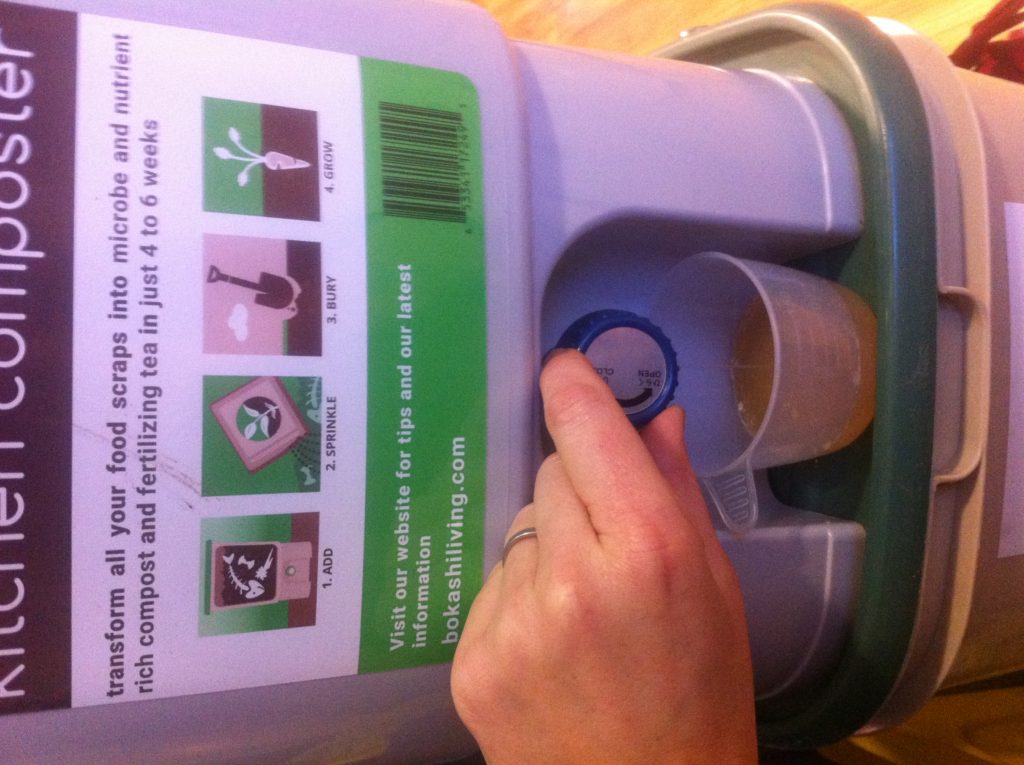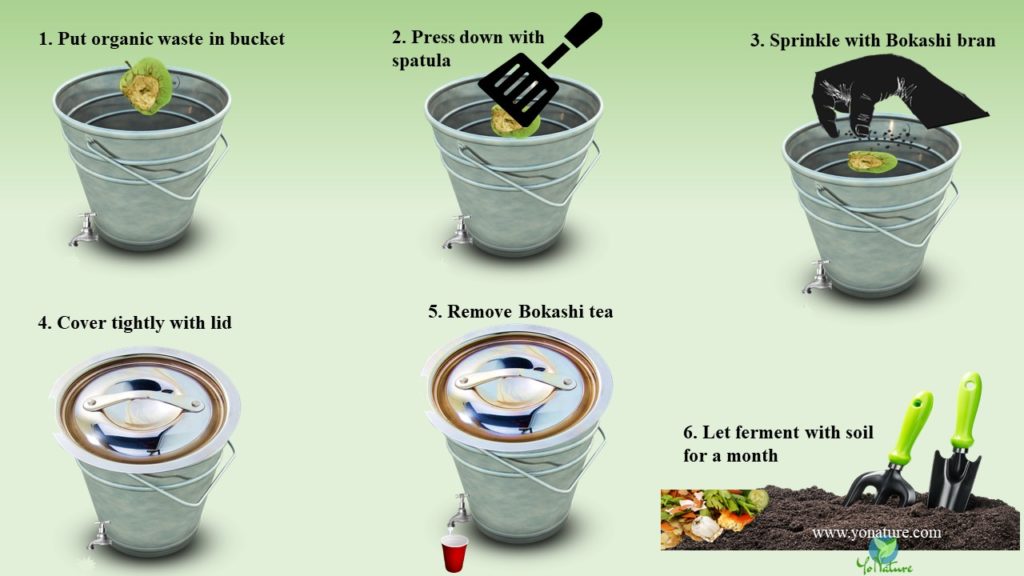Bokashi Tea: The Ultimate Guide To Making Your Own
Bokashi Tea: The Ultimate Guide to Making Your Own
Bokashi tea is a liquid byproduct of the bokashi composting process. It is made from fermented bran and food scraps, and contains a variety of beneficial microorganisms. Bokashi tea can be used to boost the health of your plants, improve soil quality, and even help to control pests and diseases.
In this guide, we will walk you through the process of making your own bokashi tea. We will discuss the ingredients you will need, the steps involved in the fermentation process, and how to use the tea once it is made. We will also provide some tips for troubleshooting and storing bokashi tea.
What is Bokashi Tea?
Bokashi tea is a liquid byproduct of the bokashi composting process. Bokashi composting is a method of fermenting food scraps using a special bran that contains beneficial microorganisms. These microorganisms, known as lactobacillus, convert the food scraps into a harmless, odorless material that can be added to soil.
As the food scraps ferment, they release liquid. This liquid is known as bokashi tea. Bokashi tea contains a high concentration of beneficial microorganisms, as well as nutrients and enzymes. These microorganisms can help to improve the health of your plants, improve soil quality, and even help to control pests and diseases.
How to Make Bokashi Tea
To make your own bokashi tea, you will need the following ingredients:
- Bokashi bran
- Water
- A container to ferment the tea in
- A funnel (optional)
Instructions:
- In a clean container, combine equal parts bokashi bran and water.
- Stir the mixture until it is well-combined.
- If using a funnel, pour the mixture into the fermentation container. If not using a funnel, simply pour the mixture into the container.
- Close the container tightly and allow it to ferment for 1-2 weeks.
- Once the tea has fermented, it is ready to use.
How to Use Bokashi Tea
Bokashi tea can be used in a variety of ways. Here are a few ideas:
- Add it to your watering can when watering your plants.
- Use it as a foliar spray.
- Mix it with compost or potting soil.
- Apply it to the soil around your plants.
- Use it to soak seeds before planting.
Tips for Troubleshooting and Storing Bokashi Tea
If your bokashi tea has a strong odor, it may be due to the presence of anaerobic bacteria. To prevent this, make sure that your fermentation container is tightly sealed. You may also want to add a small amount of molasses to the tea. Molasses provides food for the beneficial microorganisms, which can help to crowd out the anaerobic bacteria.
Bokashi tea can be stored in the refrigerator for up to 6 months. If you are storing it for longer than this, you may want to freeze it. When you are ready to use the tea, simply thaw it and let it come to room temperature before using.
Conclusion
Bokashi tea is a powerful tool for improving the health of your plants and soil. It is easy to make and use, and it can be stored for long periods of time. If you are looking for a natural way to boost the health of your plants, bokashi tea is a great option.
Bokashi tea is a nutrient-rich liquid that is produced as a byproduct of bokashi composting. It is made from fermented food scraps and bran, and contains beneficial microorganisms that can help to improve soil health and plant growth. Bokashi tea can be used as a foliar spray, a soil drench, or a compost tea. It can also be used to treat plant diseases and pests.
If you are interested in learning more about bokashi tea, I recommend visiting Garden Wiki. This website provides comprehensive information about bokashi composting, including how to make bokashi tea and how to use it. You can also find recipes, gardening tips, and a forum where you can ask questions and connect with other bokashi users.
FAQ of bokashi tea
What is bokashi tea?
Bokashi tea is a liquid byproduct of the bokashi fermentation process. It is made by fermenting bran, water, and a type of beneficial bacteria called Bacillus subtilis. The bacteria break down the bran and release nutrients that are beneficial for plants. Bokashi tea is also a good source of microbes that can help to improve soil health.
What is bokashi tea used for?
The primary use for bokashi tea is for feeding plants by adding it to the soil. It can also be used as a foliar spray, but it is important to dilute it first. Bokashi tea can also be used to water plants that are suffering from root rot or other diseases.
What is the ratio of bokashi tea to water?
Bokashi tea should be diluted at a ratio of 100:1 (water:juice). This means that for every 1 part bokashi tea, you should add 100 parts water. This will make the acid level safe for plants. Even when diluted, you should avoid adding bokashi juice to young and tender plants or their foliage. Instead, add diluted bokashi juice to the soil surrounding the plants.
How do I store bokashi tea?
Bokashi tea can be stored in a cool, dark place for up to 6 months. It is important to keep the tea in an airtight container to prevent it from spoiling.
How do I make bokashi tea?
Bokashi tea can be made at home using a bokashi bucket or fermenter. To make bokashi tea, you will need:
- A bokashi bucket or fermenter
- Bokashi bran
- Water
- A type of beneficial bacteria called Bacillus subtilis
Instructions:
- Add a layer of bokashi bran to the bottom of the bokashi bucket.
- Add a layer of food scraps to the bokashi bran.
- Repeat steps 1 and 2 until the bokashi bucket is full.
- Add water to the bokashi bucket until it is about halfway full.
- Add a handful of Bacillus subtilis to the bokashi bucket.
- Close the bokashi bucket and let it ferment for 1-2 weeks.
- Once the bokashi fermentation process is complete, you can drain the bokashi tea from the bottom of the bucket.
Image of bokashi tea
5 different images of bokashi tea from Pinterest:
- Image 1: A clear liquid in a glass jar with a black lid. The liquid is slightly cloudy and has a brown tint. There is a label on the jar that says "Bokashi Tea".

- Image 2: A black bucket with a spout. The bucket is filled with a brown liquid. There is a label on the bucket that says "Bokashi Compost Tea".
- Image 3: A close-up of a drop of bokashi tea on a leaf. The drop of tea is brown and has a slightly cloudy appearance.

- Image 4: A plant with healthy green leaves. The soil around the plant is dark brown and slightly moist. There is a small puddle of bokashi tea near the base of the plant.

- Image 5: A person watering their plants with a watering can. The water in the watering can is brown and cloudy. This is bokashi tea that is being used to water the plants.


Post a Comment for "Bokashi Tea: The Ultimate Guide To Making Your Own"